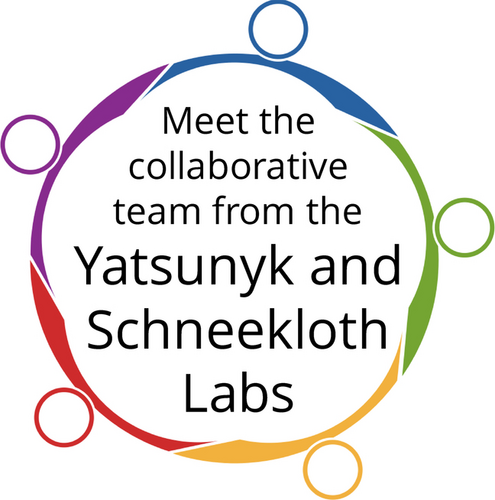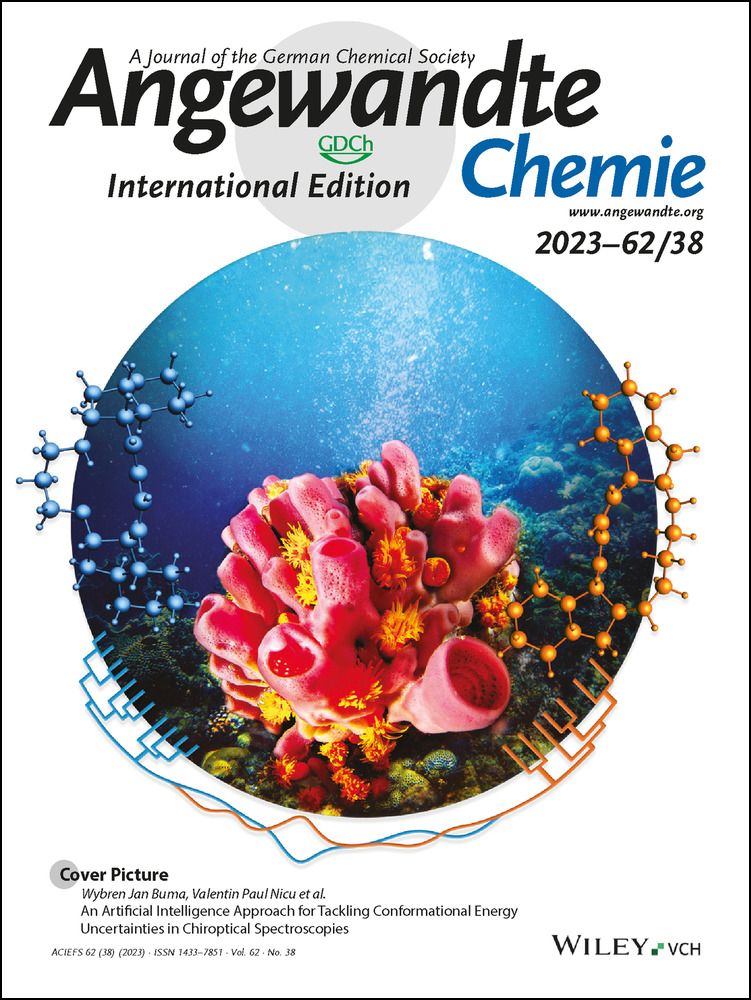Persuading the Non-canonical Intercalated-Motif DNA to Reveal Its Structure
Graphical Abstract
“A great surprise was that out of the 20 base pairs in the iHRAS dimer, only two are canonical … One hurdle in the iHRAS journey was coordinating studentsâ research efforts across multiple years. Research is not a full-time job for undergraduates. And even the most dedicated students typically spend only two or three years in the lab…” Find out more about the collaborative work in the Yatsunyk and Schneekloth Labs.
Abstract
This invited Team Profile was created by Kevin Li and Liliya Yatsunyk, Swarthmore College PA (USA) and by John Schneekloth, Jr, (Jay) National Cancer Institute, Frederick MD (USA). They recently published an article on the first crystal structure of an intercalated motif (i-motif or iM) from the HRAS oncogene involved in many cancers. The iHRAS structure was solved to 1.8 Å resolution. It contains a tail-to-tail dimer of two iMs each with six C−C+ base pairs. The structure is unique in that only two base pairs out of 20 are canonical. The extensive network of capping and connecting interactions is unprecedented. The unique structural elements (loops/connecting region) may be targeted by ligands or proteins as cancer therapies. iHRAS represents the first crystallized iM-forming structure from a human promoter. “Crystal Structure of an iM from the HRAS Oncogene Promoter”, K. S. Li, D. Jordan, L. Y. Lin, S. E. McCarthy, J. S. Schneekloth Jr., and L. A. Yatsunyk, Angew. Chem. Int. Ed. Engl. 2023, 62, e202301666.

Chemistry is all about interacting elements and systems …
How we came to work together … Liliya and Jay met at a regional chemical biology meeting and found that they shared an interest in unusual nucleic acid structures. Liliya and her students visited Jay's lab at NIH shortly thereafter for an informal group meeting. Liliya's lab specializes in structural and biophysical studies of non-canonical DNA, including G-quadruplexes and intercalated motifs (iMs). iMs are formed by cytosine-rich DNA sequences. HRAS is a member of the RAS proto-oncogene family whose promoter contains two cytosine-rich motifs. About 19 % of U.S. cancer patients carry mutations in RAS genes, but RAS proteins are very hard to target. Jay's lab screened a library of small-molecule ligands to identify those that bind and stabilize iM formed by HRAS (iHRAS) [MedChemComm, 2018]. Such ligands can serve as anticancer therapeutics by regulating oncogenic expression at the pre-transcriptional level. It became apparent that further rational design of these ligands would require a better understanding of the iHRAS structure. At this point the two teams decided to collaborate.
Deondre Jordan, a research student in Liliya's lab, energetically embarked on the project, trying to crystallize iHRAS alone and in complex with Jay's ligands. It was not long before Deondre obtained beautiful crystals that eventually diffracted to 2.0 Å resolution. However, solving the phase problem was unexpectedly tough: while molecular replacements worked, building the structure was unsuccessful. Deondre graduated, and another student, Linda Lin, and then a research assistant, Sawyer McCarthy, joined the iHRAS team. The new members looked for different molecular replacement solutions but the number of available iM structures in the protein data bank was limited.
Kinetics, thermodynamics, entropy … luck?
The breakthrough came with brominated DNA sequences and a new student, Kevin Li. Bromine was needed for anomalous data. Liliya designed the sequences and Kevin characterized them to verify that bromine atoms did not disrupt the iM. He obtained crystals of Br-DNA with diffraction superior to that of the native crystals, at 1.8 Å. Data analysis revealed beautifully clear electron density maps—the lab's first successful de novo phasing! Another hurdle in the iHRAS journey was coordinating students' research efforts across multiple years. Research is not a full-time job for undergraduates. And even the most dedicated students typically spend only two or three years in the lab—much shorter than any graduate student. From the time that Deondre first saw iHRAS crystals in 2018, four more students joined the effort, some of whom never overlapped. It was only through meticulous documentation of their work, efficient communication, and Liliya's rigorous standards for organization that the lab was able to synthesize data needed for the paper.
The biggest surprise in our study was discovering that iHRAS was a dimer in crystal. Before the success of de novo phasing, we spent months building a monomeric iM, to no avail. When Kevin first saw a clear density connecting two iMs, he assumed that something had gone wrong with the refinement… With the finalized structure in hand, we were able to rationalize the dimeric nature of iHRAS and propose a possible monomeric structure. Another great surprise was that out of the 20 base pairs in the iHRAS dimer, only two are canonical. It was wonderful to learn about the many ways that two bases can interact, contributing to the increased stability of the overall architecture. The data suggests that without the additional interactions in loops and the connecting region, the iM core may not be sufficiently stable, giving credibility to the idea that auxiliary base pairing is an essential aspect of iM stability in vivo.
Shared experiences bond us together …
The Yatsunyk lab is an undergraduate lab. We have also enjoyed having a research assistant supported by the NIH grant over the last four years. The lab is a close-knit group of friends, who work on independent projects and are experts on several techniques and topics. Students' diverse strengths come from the fact that many, in addition to majoring in chemistry/biochemistry, pursue a second major/minor in biology, statistics, computer science, or physics. Starting during COVID-19, on Fridays, the lab would partake in a “tea-time” designed to improve self-care and increase awareness of social justice and equity. Together we read and discuss books and plays, play games, and prepare food. Such activities bring us closer, fostering a sense of belonging. Liliya often extends this tradition to her home, hosting meals where everyone is a chef. These moments keep us connected and provide an opportunity for collaboration in and outside the lab. In the face of setbacks, these established relationships and shared experience serve as a collective resilience, helping us regroup efficiently.
It takes energy to explore the unknown …
What is on the horizon … IMs are not new, but the recognition of their biological importance came only recently with their in vivo visualization in the nuclei of human cells [Zeraati et al., Nat. Chem. 2018]. The data for iM's roles in gene regulation is growing but there is no clear understanding of their structures. Small-molecule ligands may exert control over the fold and stability of iM structures, but there are few effective ligands. The iHRAS structure published by our labs is an exciting breakthrough shedding light on iM folding and topologies as well as allowing the rational design of novel iM ligands. In addition, the interaction of iMs with proteins has not been thoroughly tested until Jay's most recent work [currently in BioRxiv]. This new development presents an exciting opportunity for collaboration between our labs. Liliya's lab will use proteins and conditions identified by Jay to set up structural studies with the hope of uncovering the intricate details of iM/protein binding pockets. Currently the two labs are planning to meet for an informal group meeting at the NIH. This opportunity is inspirational for Liliya's undergraduate students, and both labs are looking forward to the new collaborative efforts.
Team Profiles highlight how research groups focus their efforts and work together to achieve a common goal. Indeed, it is through the diversity of voices from all parts of the chemistry community that the excellent science published in Angewandte Chemie comes about.





